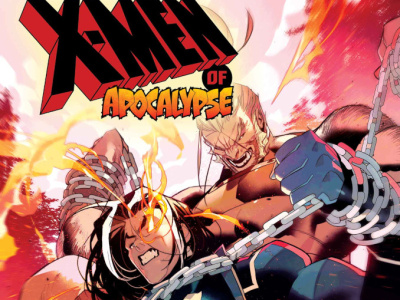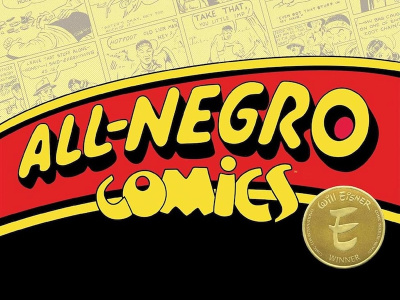Sharpening the Sword is a regular column by retailer John Riley of Grasshopper's Comics, a 1,300 square foot comic and games store in
I hope everyone had a great holiday season! I know it's not over yet, so enjoy this last week before winter really starts kicking in.
Like I mentioned last week, the end of this year marked a major transition in the history of our store. After fifteen years in business we now no longer carry back issues in the traditional sense. It was a major decision for us, and something we've been moving toward for about two years now, but sometime in early November we disassembled our last back issue bin. This is a decision that wouldn't be right for every comic store, but I think looking at the reasoning behind it at least might make other stores think about how they handle this area of their business.
The back issue market has changed dramatically since we opened in 1992 and even more dramatically since specialty market stores started appearing in the 1970s. As a kid, I was lucky to have a comic shop in my town in the 70s. At that time comic book shops were all back issues and pop culture books and magazines. You could buy a Bruce Lee or Reggie Jackson poster, a magazine about Frankenstein or UFO abductions, but you couldn't buy the new issue of Daredevil. At that time new issues were still the realm of the newsstand and comic book shops were all solely places to go for back issues.
But back issues were an entirely different animal in the 70s. Marvel produced about 20-25 comics a month (considering that their entire output fit easily on a small coupon at the bottom of their subscription page!). Most titles in production at the time had only printed 100 issues or less. So if a store kept one copy of every Marvel book published for a year, they added roughly a long box full of inventory. And since most titles were relatively young, there was a reasonable limit to the entire population of comic books available from the Silver Age forward. You could literally have a selection that included almost every comic Marvel had ever published from Fantastic Four #1 on.
But obviously things have changed since then. If I remember correctly, today there are somewhere between 600-800 books published each month. Keeping one copy of each of them on hand would add over 9,000 books to your inventory each year. Even adding one copy of each Marvel and DC would add somewhere around 2,500 books a year or more, about 10 long boxes. But that's not the only change. Back in the 70s and even the early 80s most titles being published were ongoing series, whereas today the majority seem to be miniseries, one-shots, and tie-ins, all of which are all harder to organize as back issues, and all of which usually have less long term demand than ongoing series. Now add the fact that long-term series now can have over 400 issues. Obviously, trying to keep a comprehensive selection of back issues literally grows harder each week. And let's not ignore the fact that print runs are still low compared to historical levels, meaning that it's almost impossible to keep a 'hot' recent back issue in stock.
The other key factor is price. I clearly remember going through back issue bins as a kid and seeing books like Fantastic Four #12 for fifty cents which today sells for thousands in mint condition. When we first opened our store in 1992 we had some great books on the wall, like Hulk #181, Avengers #9, etc. In the fifteen years we've been open books of this vintage have gone from selling in the low hundreds to the low thousands. As a result, high grade Silver Age books went from something that any store could be expected to have to something that only a few stores specialize in. Not only do they require a significant investment of capital, but they also have a limited audience.
A third factor is that comics have been around just long enough for us to be experiencing a generational shift. Our oldest customers might remember reading Jim Starlin's work on Captain Marvel. We remember the Kree/Skrull War in the Avemgers, or Jim Shooter's original work on Legion. But a huge percentage of active collectors today don't remember this at all, it was simply before their time. Avengers #1 came out about 44 years ago, and most of our customers are in their thirties or younger. Just like they grew up on different cartoons than we did, they also grew up on different comics.
While I may fondly remember the work of Neal Adams or John Byrne on X-Men, they grew up with the work of Jim Lee almost 200 issues later. So what does that mean? Well, we know that many collectors reach an age where they try to reconnect with the memories of their youth by buying collectibles from when they were young. Given the choice, my father-in-law would buy a 1932 Ford as a collector car, while I would buy a 1970 Challenger. We see the same thing in comics. Although we had a great selection of the early Jim Starlin Captain Marvels, they almost never sold because today's collectors have no connection to them, the books pre-date them.
I think there are a lot more factors involved in this issue, but I'll pick just one more that I think emphasizes the changes in our hobby over the past decade and a half. Since we opened in 1992, our hobby has become much more 'front-loaded' than it ever was. Up until the mid-nineties the concept of 'collecting comics' really meant that you were picking certain titles, characters, or creators that you really enjoyed and then going backward and attempting to collect all their issues, appearances, or work. After all, if you were an X-Men fan, collecting their one book that came out each month wasn't much of a challenge in and of itself.
But that has certainly changed. Today our hobby is so focused on what's coming next that we often lose interest in the story we're currently reading. And titles like X-Men can have up to 22 issues come out a month. The result is that the majority of collectors are struggling just to keep up, and don't have the time or energy to really think about collecting what's gone before. They're worried about finding this month's rare variant covers, not finding that illusive guest shot from 25 years ago.
If you want one example of how fast our market changes, try this. Marvel made a big production of spotlighting Joe Maduriera's return to comics on Ultimates 3. But we found that a very large percentage of our customers didn't even know who he was! He'd been gone from the industry long enough that an entire segment of comic fans had never heard of him. So do you really think they're looking for that early work by Steve Ditko?
This week I covered a lot of the environmental factors that have changed how we look at back issues. Next week I'll look at the business factors and how they dictated the changes we made in our store.
The opinions expressed in this column are solely those of the writer, and do not necessarily reflect the views of the editorial staff of ICv2.com.







